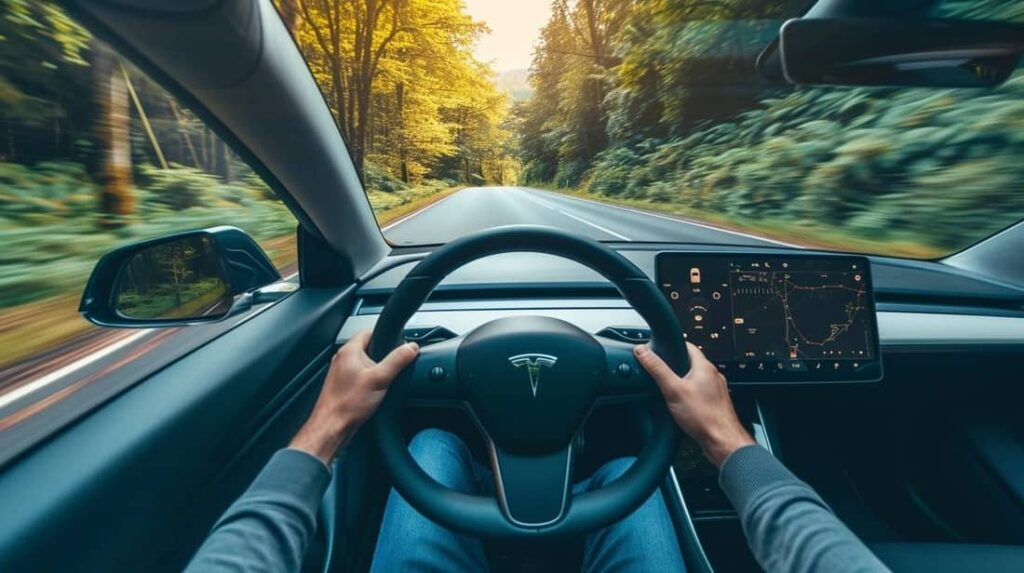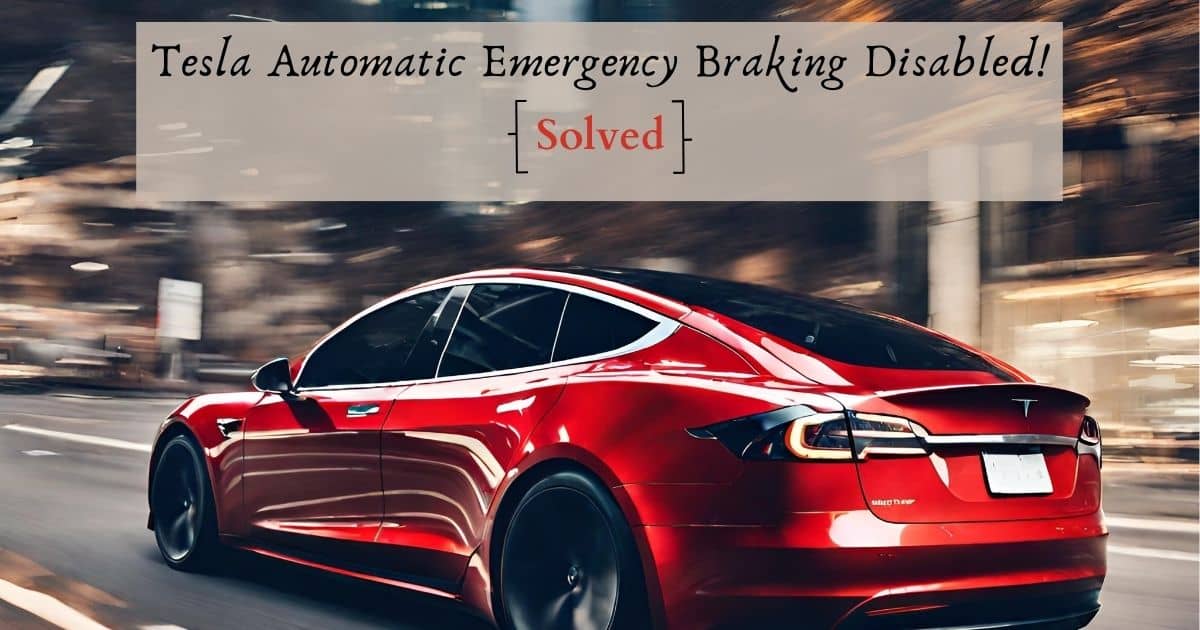In a Tesla car, the automatic emergency brakes will slow down or stop your car completely to avoid crashing into an obstacle. If the automatic brakes are disabled, you have to use the manual ones instead.
But what does the Tesla “Automatic Emergency Braking is disabled” alert mean? Simply put, the AEB feature is unavailable for the remainder of your drive. This happens due to hardware, software, camera calibration issues, etc.
Understanding why this alert appears makes you more aware of your car’s functions and how to maintain it. Join us as we explore the possible reasons for the warning and explain how to deal with the issue.
Why Does the Tesla “Automatic Emergency Braking Is Disabled” Error Occur?

Once you see this alert flashing on your screen, you should be more aware of your surroundings.
This response is important because the AEB feature will be offline for the rest of your journey. Therefore, you have to use manual emergency braking if you are about to crash into an obstacle.
There are a number of reasons why this warning appears. They include:
Hardware Defects
Malfunctions with the sensor systems can cause issues with the emergency braking system. Glitching steering controls can also cause errors.
The safest way to fix hardware issues would be to schedule routine maintenance at a Tesla service center.
Tesla technicians have a better understanding of the system’s components. They are, therefore, better positioned to fix hardware defects that interfere with the automatic emergency brain feature.
Software Glitches
Bugs present in older versions of the Tesla’s software can cause the automatic emergency braking feature to be disabled. Regularly updating your Tesla’s software can help reduce the chances of the automatic emergency braking feature being disabled.
Camera Calibration
Tesla cameras are used in emergency braking. Therefore, they need to be recalibrated every once in a while to improve accuracy. During this process, the AEB is disabled.
Environmental Elements
The emergency braking system can be temporarily disabled when the cameras and sensors are exposed to heavy rain or sunshine.
Accidental Setting Changes
If you recently started using Tesla and are still getting used to the controls, this may be the reason for the alert. You may have accidentally changed the braking settings while adjusting other settings in your car.
Keep in mind that other warnings can also cause the AEB function to be unavailable.
How to fix the “Automatic Emergency Braking Is Disabled” alert Issue in Tesla
Oftentimes, the AEB feature will be available the next time you go for a drive.
If the warning persists, follow these steps to troubleshoot the issue:
1. Conduct a Soft Reboot
A soft reboot may be enough to re-enable your AEB system.
- If you are driving, you can park at a safe spot and lock all your doors.
- Next, you should locate the two scroll wheels on either side of your steering wheel and press down on them. Hold down until the Tesla symbol appears.
- After performing the soft reboot, check if the issue has been resolved. You can do so by going to “Controls,” then selecting “Autopilot,” clicking on “Automatic Emergency Braking,” and finally switching it on.
The soft reboot usually helps solve issues related to software update glitches, network connectivity, and unresponsive touch screens. If any of these is the underlying issue, then a soft reboot will help re-enable the automatic emergency braking feature.
If a hardware defect is the underlying problem, then a soft reboot may not be enough to fix it. The safest option in such a scenario would be scheduling a service appointment with Tesla.
2. Update your car’s system software
The emergency braking system may be disabled because of bugs present in an older version of the software.
Normally, your Tesla should prompt you to install new updates periodically. Check for new updates manually by going to “Controls,” then clicking “Software” and selecting “Software Update.”
3. Calibrate the camera
Proper camera calibration is vital to the normal operation of the car’s collision avoidance system.
You can recalibrate the camera yourself by driving along a straight road that has visible lane markings for a couple of miles. Ensure that the road you choose has little to no obstacles.
Your Tesla should recalibrate automatically while you drive.
4. Request for routine maintenance
If all the fixes listed above do not work, then you should schedule routine maintenance through the Tesla app.
Start by opening the app, clicking on “Service,” and following the prompts. Once you schedule a service appointment, you should be ready for either a mobile service appointment or a visit to the service center.
Note that deciding to go to a non-Tesla shop for maintenance instead could interfere with your warranty’s coverage if any issues arise.
Can the Automatic Emergency Braking System Fail to Apply Brakes When Enabled?
There are situations when the automatic braking system does not apply brakes or stops applying brakes.
These situations arise when:
- You step on the brakes and release them while the AEB system is active.
- You turn the steering wheel hard.
- The obstacle is no longer in your Tesa’s driving path.
- You accelerate sharply when the AEB system applies brakes.
Note that these responses only apply when your AEB system is working and not disabled.
FAQs
Here are some common questions others have about the Tesla AEB system:
The system works for speeds between 3 mph (5 km/h) and 124 mph (200 km/h).
After a collision, the AEB system will apply the brakes if airbag deployment is detected and there are risks of multiple collisions. This response occurs at any driving speed.
It takes no more than three minutes to reboot a Tesla. A soft reboot usually takes a shorter time than a hard reboot.
Conclusion
The AEB system in a Tesla reduces the risk of collision when driving. If you receive a Tesla “Automatic Emergency Braking Disabled” alert, it may be because of a hardware issue, environmental factors, or accidental setting changes.
You can fix the issue by performing a soft and hard reboot, recalibrating your cameras, or updating your Tesla’s system software. If none of the fixes work, you should schedule a routine maintenance with Tesla.

I am an experienced guide in electric mobility, offering clear and expert guidance for those venturing into the world of electric vehicles.
Through collaborations, research, and hands-on experience, I navigate readers through the evolving landscape of smart automobile technologies and the significance of renewables.

